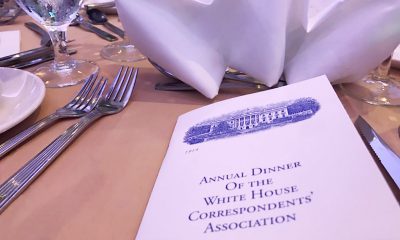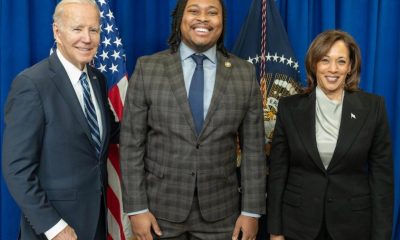Commentary
Recalling the struggle to repeal ‘Don’t Ask, Don’t Tell’
10 years later, gov’t still cleaning up the mess of failed law
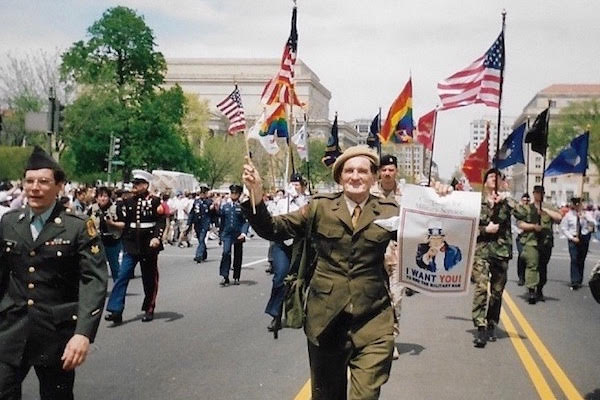
Franklin Burch was ecstatic marching down the street waving a small American flag and an “Uncle Sam: I Want You” poster during the March on Washington for Lesbian, Gay, and Bi Equal Rights and Liberation. “Gays and lesbians have a right to serve,” the 70-year old gay vet from Los Angeles told the Washington Post on April 25, 1993. “This is America, and we have these rights.”
An estimated 700,000 LGBTQ and allies agreed, marching past the White House and pouring onto the Mall, many grasping for hope during the horrific Second Wave of AIDS. An idealistic optimism was palpable. Gays had voted en masse to elect Bill Clinton as president of the United States, ejecting the Reagan-Bush administration that ignored the deaths of a generation of gay men. Clinton had promised money for AIDS research and pledged nondiscrimination policies, including lifting the ban on gays and lesbians serving in the military.
ANGLE’s David Mixner, a Clinton friend from the anti-Vietnam War days, strenuously pointed out that the U.S. military was America’s largest employer, enabling gay people stuck in hateful environments to get out, get an education, see the world and serve their country. Not giving gays that opportunity was unfair, and therefore, un-American.
The March on Washington program opened with a stunning Robin Tyler-produced encapsulation of the moment – a sense of pride in our patriotism. To a recording of military theme songs, flag-bearing gays and lesbians who had been drummed out of the military marched onstage, accompanied by some active-duty military coming out publicly based on Clinton’s promise. Navy Officer Keith Meinhold and Army Col. Margarethe “Grethe” Cammermeyer ended the procession, with Cammermeyer calling everyone to attention. The crowd – including me – stood at attention, too, tears streaming down our faces at the courage of our people to serve a country that still treated us as deviants.
Then Dorothy Hajdys took the stage carrying a framed photo of her son, Petty Officer Third Class Allen Schindler, murdered six months earlier in a public toilet in Sasebo, Nagasaki, Japan by two shipmates. The coroner said Schindler’s injuries were worse “than the damage to a person who’d been stomped by a horse.” Schindler could only be identified by the tattoos on his arm. The March on Washington crowd gave Hajdys a 10-minute standing ovation. We knew the cost of freedom.
House Speaker Nancy Pelosi read a letter from Clinton, who didn’t attend or send a video, as expected. “I stand with you in the struggle for equality for all Americans, including gay men and lesbians,” Clinton wrote. “In this great country, founded on the principle that all people are created equal, we must learn to put aside what divides us and focus on what we share.”
Liberal Democratic icon Sen. Edward M. Kennedy spoke via an audio tape, comparing our March to the famous civil rights march of 1963. “We stand again at the crossroads of national conscience,” Kennedy said.
But there were hints of a coming storm. Robin Tyler tore a Clinton telegram of apology on stage as unacceptable. “A Simple Matter of Justice” banner flapped in the background as beloved ally actress Judith Light said: “I am grateful to you, the gay and lesbian community, for the impact you are having on all of society. I am grateful for your teaching Colin Powell about equal opportunity. I am grateful for your teaching Sam Nunn about moving into the 20th century. I am grateful for your teaching George Bush about the consequences of irresponsible neglect and misuse of power. And you are in the process of teaching President Clinton the importance of being a leader and the dangers of compromising with what is right and just.”
But teaching doesn’t equal lessons learned. Clinton betrayed us, agreeing to a Nunn-devised “compromise” on lifting the gay ban called “Don’t Ask, Don’t Tell, Don’t Pursue.” Democratic Sen. Sam Nunn and Republican John Warner evoked horrific “gay sexual predator” images as they went aboard a submarine to ask sailors how they’d feel lying in such proximity to a gay shipmate. The subtext was clearly an invitation to harass those suspected of being gay and lesbian. Witch hunts were sport.
The cruelty of DADT went beyond the physical. If a buddy on the frontlines in Iraq or Afghanistan was killed by an improvised explosive device (IED), the gay service member could not share the fear, the pain, the trauma because letters back home were checked and psychiatrists and chaplains had to report gay-related confessions. The lives of 14,000 gay, lesbian and bisexual service members were ruined by the time DADT officially ended a decade later, on Sept. 20, 2011. Today, marking the 10th anniversary of the official repeal, the Veterans Administration concedes it is still catching up with all the damage governmental politics created. It’s estimated that more than 114,000 LGBTQ service members or those perceived to be LGBTQ were discharged between Franklin Burch’s service in World War II and the repeal of DADT.
“Although VA recognizes that the trauma caused by the military’s decades-long policy of discrimination against LGBTQ+ people cannot be undone in a few short months, the Biden administration and Secretary McDonough are taking the steps necessary to begin addressing the pain that such policies have created. LGBTQ+ Veterans are not any less worthy of the care and services that all Veterans earn through their service, and VA is committed to making sure that they have equal access to those services,” writes Kayla Williams, a bisexual veteran and assistant secretary for public affairs in VA’s Office of Public and Intergovernmental Affairs on the VA blog.
Clinton’s betrayal broke our hearts and ruined lives. But amazingly, it did not stop us — which attorney C. Dixon Osburn, a civilian graduate of Georgetown University Law, recounts in his just released must-read book “Mission Possible: The Story of the Repealing of ‘Don’t Ask, Don’t Tell.’” This is the stunning story of how Osburn and attorney Michelle Benecke, a Harvard Law graduate and former Army captain, founded Servicemembers Legal Defense Network to immediately help desperate service members and work with nonprofit allies and law firms to challenge DADT in the courtroom and in the court of public opinion.
“Mission Possible” completes an important trilogy about LGBTQ people serving in the U.S. military, next to “Coming Out Under Fire,” by Alan Bérubé and Randy Shilts’ “Conduct Unbecoming: Lesbians and Gays in the U.S. Military.” These books are not only LGBTQ history, but about our patriotism and what drives our private lives — and how government has intervened to block us at every step based on bias.
“Mission Possible” is also a book about endurance, ingenuity, and triumph. If a united gay voting bloc and 700,000 people on the Mall and thousands more back home didn’t give Clinton enough clout or backbone to keep his promise to lift the gay military ban – SLDN needed a smart, comprehensive strategy and a willingness and stamina to keep their eyes on the distant prize of repealing DADT. After educating an anti-military community and fighting a “graveyard mentality” that believed that lifting the gay ban was impossible, they had to figure out how to secure bipartisan support.
And there was bipartisan support, privately. “Party sticks with party, unless there’s a breakthrough, Osburn says, noting that GOP Sen. Lisa Murkowski told him: “You have to create the moment so I can be with you.”
With the discharge of the Arab linguists, DADT became less an issue of civil rights and more publicly an obstacle to national security. There are scores of nail-biting behind-the-scenes stories about how SLDN shifted the public and military consciousness from July 1993 to September 20, 2011, “when President Barack Obama, Secretary of Defense Robert Gates, and Admiral Mike Mullen, chairman of the Joint Chiefs of Staff, certified to Congress that implementing repeal of the policy would have no effect on military readiness, military effectiveness, unit cohesion, or recruiting and retention.”
Dec. 18, 2010 – on Osburn’s birthday – the Senate finally voted to deliver more than 60 votes to overcome Republican Sen. John McCain’s repeated and stubborn use of the filibuster to block repeal. There are echoes of political machinations of today.
There are crafty stories, as well, illustrating the absurdity of DADT. For instance, Army Sergeant Darren Manzella, Osburn writes, “was the epitome of the competent, well-regarded openly gay soldier who put a lie to the belief that his mere presence would weaken military readiness. He was out to his Army buddies and had even introduced them to his boyfriend.” In 2006 at Fort Hood, he started getting anonymous emails and “calls warning him that he was being watched and to ‘turn the flame down.’” He sought advice from his commanding officer which triggered an investigation, with which Manzella fully cooperated. The Army concluded he wasn’t gay and told him to go back to work. He was subsequently deployed to Iraq, then Kuwait, unsure whether a new commander would discharge him.
SLDN reached out to Manzella to see if he’d be willing to do a 60 Minutes interview, explaining the pros and cons if he went forward. He said yes, but how to do it knowing the Army wouldn’t grant permission? SLDN communications director Steve Ralls came up with a plan. “Manzella signed up to run in the Army marathon in Kuwait. At a predetermined point, he veered off-course to a waiting car that whisked him to a hotel, where he changed into civilian clothes and met with correspondent Lesley Stahl. After the interview, he changed back into his running clothes, the crew doused him with sweaty water, and the car whisked him back so he could cross the finish line,” Osburn writes. “Once the segment was broadcast, the Army could no longer pretend that Manzella wasn’t gay, or that ‘Don’t Ask, Don’t Tell’ was a law with an on-off switch. He was discharged six months later and became one of the many vocal advocates for repeal.”
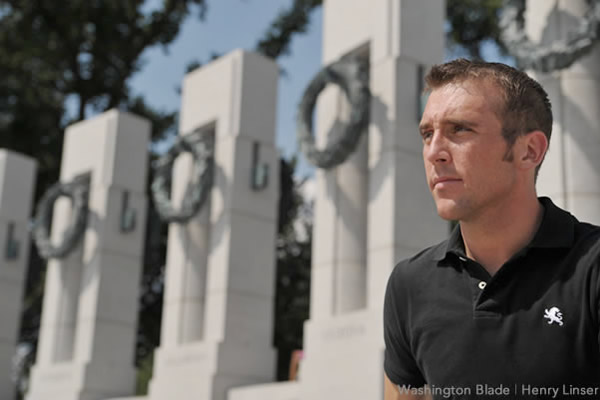
On Dec. 22, 2010, President Barack Obama kept the campaign promise he made and signed the repeal of Don’t Ask, Don’t Tell. “For we are not a nation that says, ‘don’t ask, don’t tell.’ We are a nation that says, ‘Out of many, we are one.’ We are a nation that welcomes the service of every patriot. We are a nation that believes that all men and women are created equal. Those are the ideals that generations have fought for. Those are the ideals that we uphold today,” Obama said. “And now, it is my honor to sign this bill into law.”
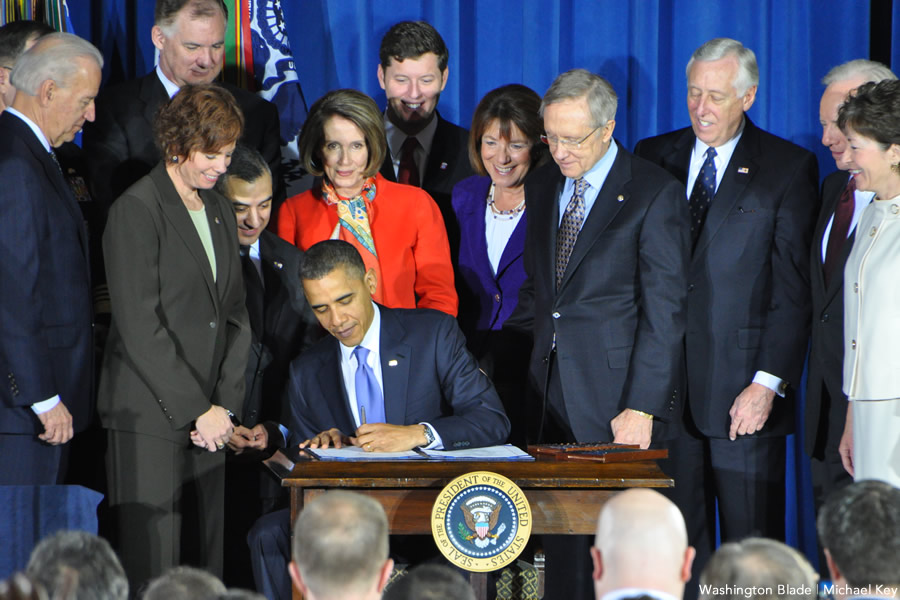
“There’s been a lot of progress in the last 10 years – despite the last four,” Osburn says. “It’s all been teed up by SLDN.”
But we still are not fully first-class citizens, though we now have the right to serve and die for our country. The Equality Act is next.
Commentary
World ‘isn’t much different today’
The Nazis murdered nearly 1 million Jewish people at Auschwitz

OŚWIȨCIM, Poland — Łukasz, a Polish man who was our group’s English-speaking tour guide at Auschwitz, on April 7 asked us while we were standing outside one of Auschwitz I’s barracks why the Nazis systematically murdered more than 6 million Jewish people.
“Once they are gone, Germany will be great again,” he said, referring to the Nazis’s depraved justification.
There were other Americans in our group of about 40 people. I would like to think they are familiar with the dehumanizing MAGA rhetoric to which our country has become accustomed since President Joe Biden’s predecessor announced his White House bid in 2015. The fact that I was at a Nazi concentration camp was simply overwhelming, and I didn’t feel like speaking with them or to anyone else at that moment.
The unspeakable horrors that happened at Auschwitz are on full display. Łukasz’s comment was a stark warning to us all amid the backdrop of the current socio-political realities in which we in the U.S., Europe and elsewhere around the world currently live.
• Suitcases, glasses, shoes, kitchen utensils, prosthetic limbs, baskets, Jewish prayer shawls, and toothbrushes that were taken from people upon their arrival at Auschwitz were on display in Auschwitz I’s Block 5. One exhibit also contains children’s clothes.
• Auschwitz I’s Blocks 6 and 7 had pictures of male and female prisoners along the corridors. They contained their birthdays, the day they arrived at the camp and when they died. Block 7 also had mattresses and bunk beds on which prisoners slept and the sinks and latrines they used.
• The basement of Auschwitz I’s Block 11 had cells in which prisoners were placed in the dark and starved to death. The basement also had cells in which prisoners were forced to stand for long periods of time. Executions took place at the “Death Wall” in the courtyard between Block 10 and 11. Guards also tortured prisoners in this area.
• Medical experiments took place in Block 10.
• A gas chamber is located near Auschwitz I’s entrance with the gate that reads “Arbeit macht frei” or “Work sets you free.” The adjacent crematorium contains a replica of the furnaces used to burn human bodies.
• An urn with human ashes is in Auschwitz I’s Block 4. Hair cut from people who were killed in the gas chamber was also there.

Auschwitz I, a former Polish army barracks, is one of 40 camps and subcamps around Oświęcim, a town that is roughly 30 miles west of Kraków, Poland’s second-largest city, that became known to the world as Auschwitz. Upwards of 90 percent of the 1.1 million people killed at Auschwitz died at Auschwitz II-Birkenau, which is roughly 1 1/2 miles northwest of Auschwitz I in the village of Brzezinka (Birkenau in German), and more than 90 percent of those murdered upon their arrival were Jewish.
The ruins of two crematoria the Nazis blew up before the Soviets liberated the camp in January 1945 are there. (A group of Israelis were praying in front of them while our group was there.) A train car used to bring people to the camp was also there, along with some of the barracks in which those who were not immediately killed in the gas chambers lived.
Auschwitz II-Birkenau’s sheer size is incomprehensible.

The Nazis killed 6 million Jewish people in the Holocaust. They also murdered gay men, Poles, Roma, Sinti and millions of other people from across Europe.
The day I visited Auschwitz marked six months since Hamas launched its surprise attack against Israel.
More than 1,400 people — including 260 people who Hamas militants murdered at the Nova music festival in Re’im, a kibbutz that is a few miles from the Gaza Strip — have died in Israel since Oct. 7, 2023. The subsequent war has left more than 30,000 Palestinians in the Hamas-controlled enclave dead, and millions more struggling to survive. Oct. 7 was the deadliest attack against Jewish people since the Holocaust. That unfortunate coincidence of dates — Oct. 7 and April 7 — was not lost on me while I was at Auschwitz.
Another striking thing is the area in which the camps are located.
The train from Kraków to Oświęcim passes through idyllic countryside with green meadows, flowering trees and freshly tilled fields. Purple lilacs — like those that bloom each spring on the trees in my mother’s backyard in New Hampshire — were in full bloom inside Auschwitz I. Grass and dandelions were growing amid the remains of Auschwitz II-Birkenau’s barracks. Birds were chirping. The weather was also unseasonably warm with temperatures well over 80 degrees and a cloudless sky.
All of it was beyond surreal.
I visited Auschwitz while on assignment for the Washington Blade in Poland. I interviewed gay Deputy Polish Justice Minister Krzysztof Śmiszek in Warsaw and sat down with activists in the Polish capital and Kraków to talk about the country’s new government and the continued plight of LGBTQ refugees from Ukraine and other countries. My trip began in Budapest, Hungary, and ended in Berlin. I did not write this piece until I on my flight back to D.C. on Tuesday because I could not properly articulate my thoughts about what I saw at Auschwitz.

Governments, politicians, political candidates, and parties in the U.S. and around the world have used specific groups of people to advance a particular agenda, to blame them for what is wrong in their particular country and/or to deflect blame from their own failures. The Nazis and what they did to Jewish people and anyone else they deemed inferior is the most grotesque example of what can happen if such actions are not stopped.
Łukasz told us outside of one of the Auschwitz II-Birkenau barracks at the end of our tour that the world “isn’t that much different today.” He also said that we are “witnesses.”
“It’s up to you how you react to it,” said Łukasz.
Let’s hope we all do our part to make sure the atrocities that happened at Auschwitz never happen again.
Commentary
Preserving our tapestry: Navigating European elections, empowering queer women and the imperative of safe spaces
EU elections will take place in June 9
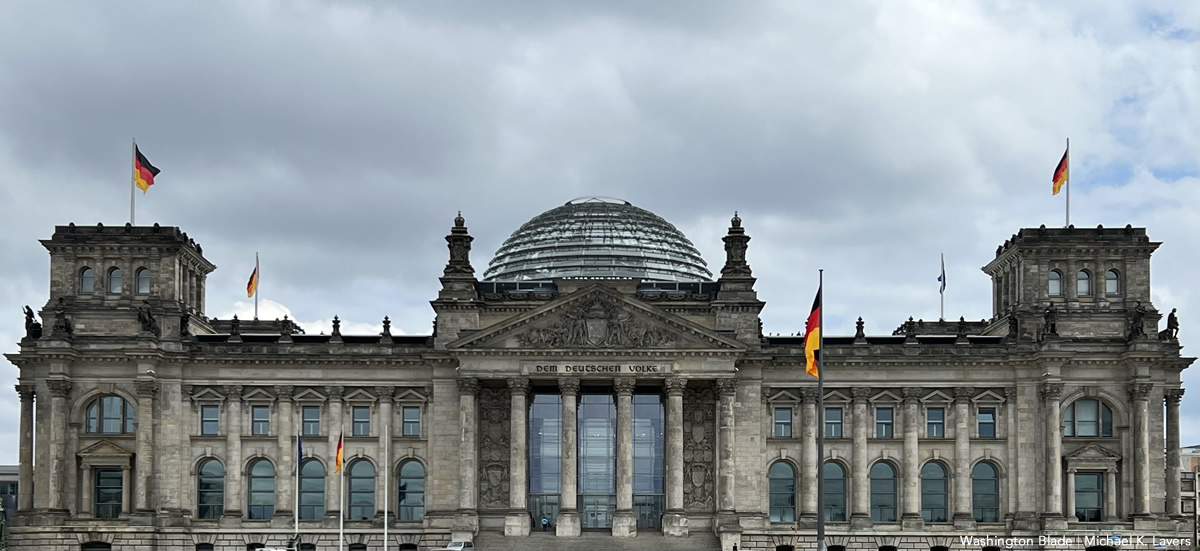
As the European Union anticipates the upcoming elections in June, a disconcerting wave of transphobic rhetoric has swept across the continent, notably in 21 EU member states, according to a recent report by ILGA-Europe. The 13th Annual Review of the Human Rights Situation of LGBTQ People in Europe and Central Asia stresses the alarming rise in hate speech targeting the LGBTQ and intersex community. This growth in negativity — which particularly is directed at transgender people — raises profound concerns about the state of inclusivity, human rights and democracy within the EU.
The alarming surge of transphobia in European politics
According to the report, there is a trend of hate speech coming from politicians across 32 European countries of which 21 being EU member states. Painting a stark picture of the challenges faced by the LGBTQ community. In a staggering list that includes Austria, Germany, Spain and others, politicians have increasingly weaponized anti-trans rhetoric. Exploiting children is a tactic often used as part of scare strategies to create opposition to trans minors’ access to healthcare and educational facilities, extending this divisive approach to a broader trend where politicians argue that restricting information about LGBTQ people is a necessity to protect minors.
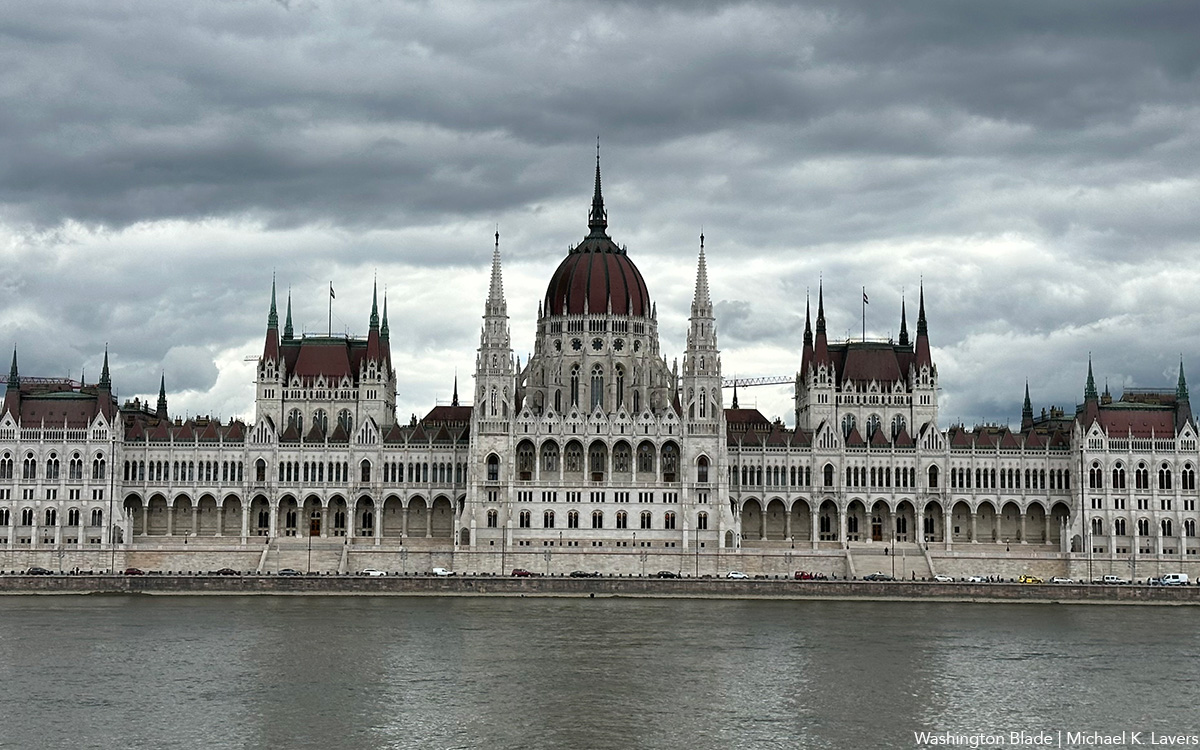
The rise in transphobic rhetoric is not only confined to politics but it has other tangible consequences. The report highlights a concerning escalation in suicide rates and mental health issues, particularly in LGBTQ youth. Violent protests outside schools and libraries have created unsafe environments, adding to the growing list of challenges faced by the community.
The far-reaching impact of demonization by politicians and the introduction of restrictive legislation underscores the need for urgent action. Hate speech is not merely an affront to people’s rights, it is an assault on the very core values upon which the EU was founded. As ILGA-Europe Advocacy Director Katrin Hugendubel notes, human rights, especially those of LGBTQ people, are facing a significant challenge from far-right forces. The exploitation of LGBTQ rights to undermine democracy, human rights and the rule of law highlights the divisive nature of the current political landscape.
As ILGA-Europe prepares to launch the “Come Out 4 Europe” campaign in response to these alarming trends, the need for visible and supportive queer female spaces is more apparent than ever. The campaign, seeking commitments from European Parliament candidates to protect the rights of LGBTQ people, underscores the urgency of safeguarding human rights, democracy and freedom.
The crucial role of queer women in European elections
Belgium, amid this backdrop of rising transphobia, is preparing for the European elections on June 9, 2024. The importance of this electoral process cannot be overstated, especially for queer women. With citizens aged 16 and above casting their votes to elect 22 members of the European Parliament (MEPs), it’s a pivotal moment for the LGBTQ community.
The voting process in Belgium follows EU law, utilizing a proportional representation system. Voters choose one party, either by marking the box above the party list or selecting individual candidates on the list. The total ballot forms for each party determine seat distribution, and preferential votes then decide which candidates secure a seat in the European Parliament.
Educated voting in the European elections is essential to queer women and the importance cannot be stressed enough. Throughout history they have faced unique battles, but this community holds the power to shape policies that directly influence their lives. By engaging in the democratic process, queer women can actively challenge the current surge in hate speech towards trans people by voting for electing representatives who actively advocate for LGBTQ rights.
Representation is more than a mere buzzword. It matters. Understanding candidates’ positions on LGBTQ issues is key and requires educating oneself on candidates’ stances as to allow queer women to vote for representatives who genuinely champion LGBTQ rights. A diverse and inclusive representation ensures that the concerns and voices of the queer community are not just heard but which are acted upon. Decisions within the European Parliament influence policies ranging from anti-discrimination laws to access to healthcare. An informed vote makes sure that legislation promotes equality, acceptance and the protection of LGBTQ rights.
By being educated on the European elections and its candidates, queer women embark on a journey of self-empowerment. By supporting candidates who prioritize inclusive curricula, they contribute to addressing LGBTQ history, health and rights, encouraging a more accepting future.
The undeniable need for physical queer women spaces
Since the European elections are nearing, the importance of physical spaces for queer women to gather and discuss voting and the candidates becomes increasingly evident. While online spaces offer the chance to connect and discuss, they come with their own unique challenges, including the spread of misinformation and miscommunication. In navigating the democratic landscape, the value of in-person gatherings for education and discussion cannot be stressed enough.
The world is saturated with digital information, and misinformation can easily infiltrate online spaces. Physical gatherings allow for a more controlled environment with direct feedback from peers, where queer women can share accurate and reliable information, ensuring a more nuanced understanding of candidates, policies and the electoral process.
In the lead-up to the European elections, we have to recognize that physical spaces for queer women are crucial. They do not only combat misinformation, disinformation and miscommunication but also serve as a vital space for shared learning. In-person gatherings create the foundation for an informed and engaged electorate, promoting a collective voice that resonates in the democratic process. The power of change lies not just in our votes but in the shared wisdom and unity forged in the physical spaces we create together.
The plight of the Crazy Circle and the call for investment in queer women spaces
After the closing of Brussels’ iconic Crazy Circle, a feminist queer space that has served as a safe haven for the LGBTQ community, it becomes increasingly evident that the struggle for queer women-only spaces in Belgium is a critical issue demanding our attention.
For the past five years, Crazy Circle has been a testament to the resilience of the LGBTQ community, creating a safe and celebratory space for queer women and their allies. However, its closure after the previous management leaving for unknown reasons and current fundraising attempt by the new owners to reopen highlight the challenges faced by such spaces in Belgium. These establishments play a vital role not only as social hubs but as catalysts for education, empowerment and advocacy. Fortunately for the new owners they recently reached their fundraising goals and raised over 50,000 euros to reopen Crazy Circle.
The loss of a space like this underscores the broader struggle faced by queer women-only spaces in Belgium. Beyond being social hubs, these spaces are vital agents of change, providing a haven for education, empowerment and advocacy. We must recognize that our commitment to the LGBTQ community extends beyond words.
The “Come Out 4 Europe” campaign by ILGA-Europe serves as a proactive response to the alarming trends in hate speech. It calls for clear political commitments on safeguarding human rights, democracy and freedom from candidates in the upcoming European Parliament elections in June. Belgium, with its own elections on the horizon, stands at a crossroads where the choices made will resonate far beyond its borders.
If we want to inform queer females about campaigns like “Come Out 4 Europe” we need spaces like the Crazy Circle. Its closure is a stark reminder of the fragility of these vital spaces. It’s a call to action, urging us to invest more in preserving and expanding queer women-only spaces. The struggle faced by Crazy Circle is not an isolated incident; it reflects a broader challenge that demands a collective response all over the world.
By fighting to preserve and expand queer women-only spaces, we are not merely safeguarding physical venues. We are investing in the education, empowerment and advocacy of the LGBTQ community. These spaces are not mere bars or gathering spots; they are crucial agents of change and empowerment.
Building a future of inclusivity
As we see what happened to Crazy Circle in Belgium, let us use this moment as a catalyst for change. It is time to rally together behind existing queer women spaces, ensuring their survival and actively working towards expanding and creating new ones. By doing so we empower individuals to educate, advocate, and, most importantly, vote for a future where safety, equality and acceptance prevail for all members of the LGBTQ community. It’s not only a matter of choice to preserve these spaces; it is a commitment to a world where everyone has the right to be safe, heard and celebrated.
In navigating the complex tapestry of the European elections, the empowerment of queer women spaces through informed voting and the preservation of physical queer women spaces become integral threads. As we stand on the precipice of change, our choices today will shape the inclusive and accepting future we envision. Together, let us weave a tapestry that celebrates diversity, protects human rights and builds a future where every voice, especially those of queer women, is not just heard but cherished.
Commentary
Returning to the kibbutz: A journey of heartbreak and hope
Hamas militants attacked Kfar Aza on Oct. 7
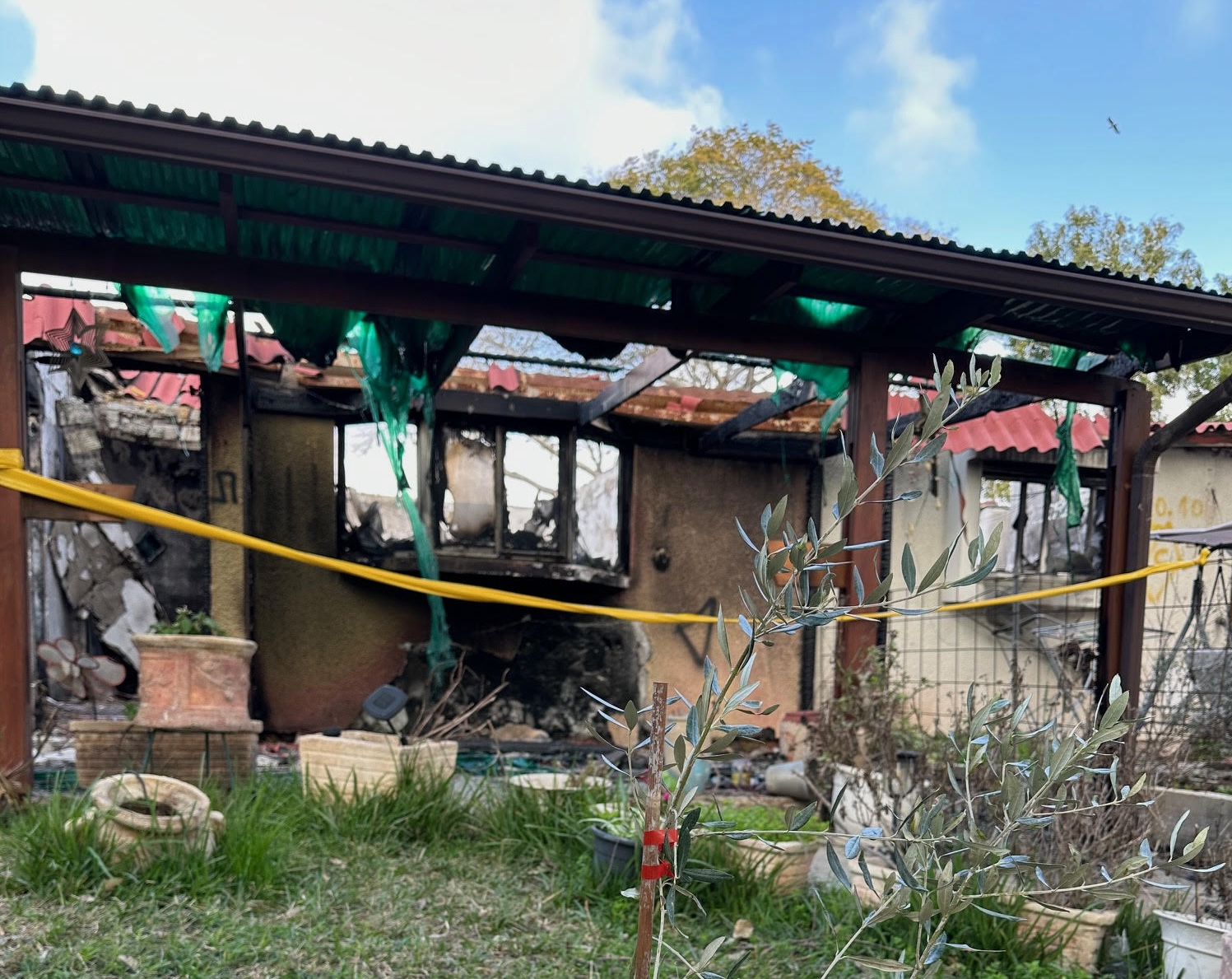
BY K.T. COLIN | In 2019, my first encounter with Israel was through the lens of a sponsored Birthright trip. I embarked on a three-week journey, traversing the diverse landscapes from the northern regions to the eastern territories and finally to the arid southern desert. I had the opportunity to visit different communities within Israel and Palestine. Amidst this exploration, I spent an unforgettable three days and two nights in a kibbutz situated near the Gaza border. The memories etched in my heart were ones of unbridled joy, resilience and the harmonious coexistence of the desert dwellers — an emotional tapestry that forever imprinted itself on my soul. Coming from an Iraqi heritage, I viewed these expressions of coexistence through a lens shaped by my own region’s history of conflict and diversity.
As I recall the Shabbat dinner at the kibbutz, the air resonated with the sacred call to prayers (Adhan) from a nearby Bedouin Arab-Muslim town. The juxtaposition of cultures and faiths was a poignant reminder of the shared humanity that bound the Jewish and Arab Israelis in this region. It was a journey that transcended the ordinary, leaving an indelible mark on my consciousness. Filled with memories of peace and unity, I returned, only to confront a reality far removed from my cherished memories.
Fast forward to last month, when I returned to the Negev Desert, specifically to Kfar Aza — one of the 22 kibbutzim targeted by Hamas on that fateful day, Oct. 7, 2023. The once vibrant oasis, brimming with the light of life, now stood shrouded in the darkness of war-induced death and destruction. The very bench where camaraderie blossomed in 2019, while sharing a moment of connection with an Israeli companion, lay reduced to ashes. The thriving pathways, once bustling with life, had metamorphosed into haunting reminders of blood and rubble. The faces that animated Shabbat gatherings, weaving tales of peace advocacy between Palestinians and Israelis, were now conspicuously absent. In the wake of Hamas’s brutality, no entity — be it human, animal or plant — escaped unscathed. The aftermath resembled scenes from an apocalyptic movie, a tableau of sensory deprivation dominated by the stench of death and the echoes of destruction. This destruction, while uniquely harrowing, echoed the all-too-familiar scenes of conflict from my childhood in Iraq, underscoring the universal tragedy of war.
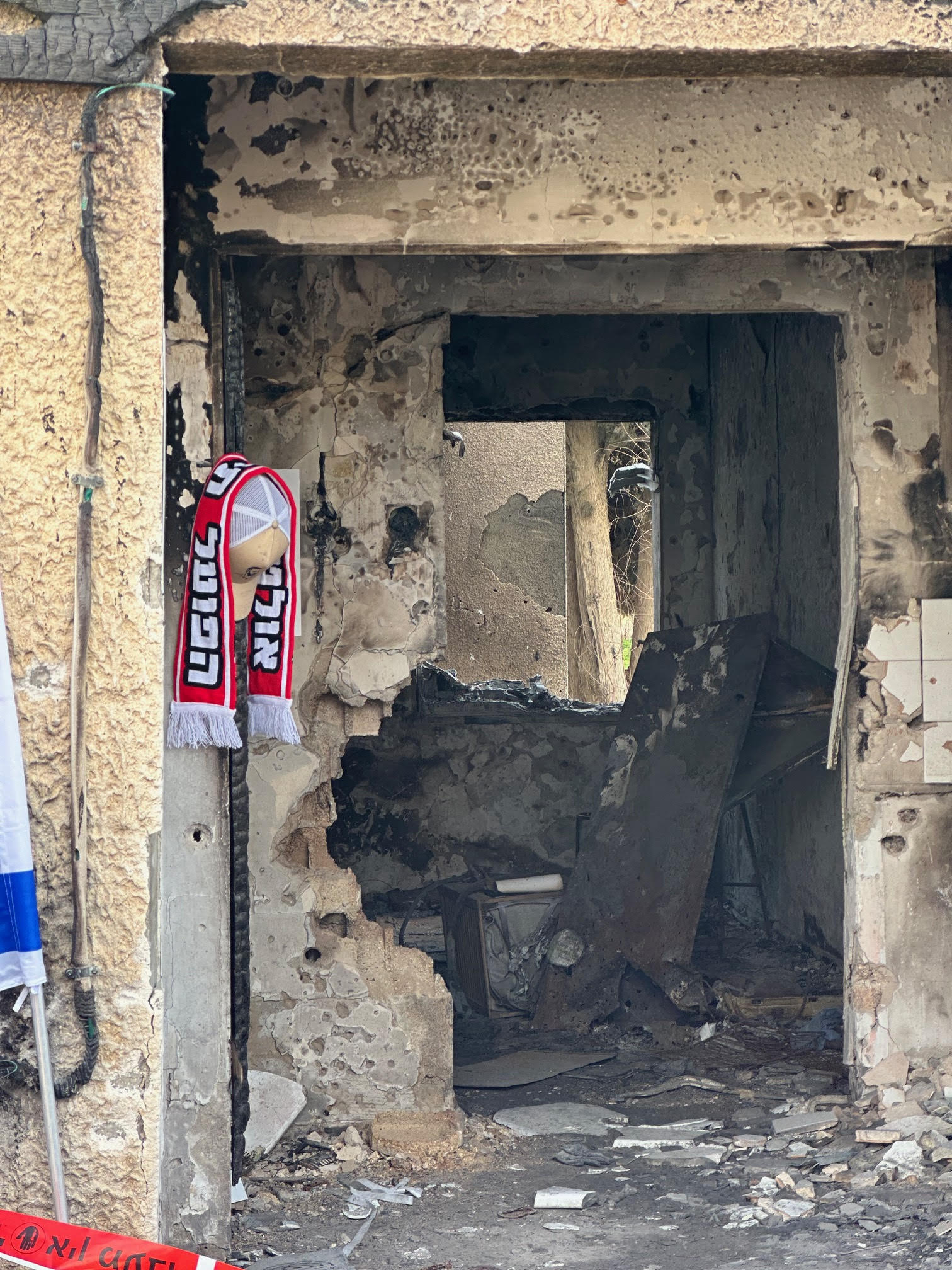
While my roots trace back to Iraq, a land marred by wars and the brutality of conflict, the devastation witnessed in Kfar Aza struck a chord that reverberated with the echoes of my past. My personal journey, from witnessing Saddam’s reign of terror to observing the aftermath in Kfar Aza, underscores a broader narrative of resilience and the enduring hope for peace. Born during the Iraqi-Iranian war, my father’s absence for the first six months of my life spoke volumes about the toll of conflict. The invasion of Kuwait and subsequent wars entrenched the narrative of war as an unwelcome companion in our daily lives. Memories of the U.S. invasion in 2003, the ensuing civil war, and the subsequent loss of rights for women, secular individuals and LGBTQ+ members further underscored the harsh reality of conflict.
Yet, Kfar Aza was a unique chapter in my journey, revealing a form of malevolence that transcended my prior experiences. In their assault, Hamas meticulously targeted specifically peace activists who wanted nothing but peace and prosperity between Israelis and Palestinians, sparing no atrocity in their pursuit. This was not just about taking lives; it was a heinous assault on the very prospect of peace. The evil that unfolded reminded me of the forces mentioned in the Quran — Yaajooj and Maajooj — entities of pure malevolence against whom even Alexander the Great erected a wall, according to Muslim prophecy.
My upbringing in Iraq, under the shadow of Saddam Hussein’s dictatorship, fanned the flames of anti-Semitism. A once diverse Iraq, home to 165,000 Iraqi Jews, witnessed their forced exodus through decades of genocide. Subsequently, Christians, Yazidis and Sabbea Mandaeen fell victim to ethnic cleansing orchestrated by dictatorial regimes, Nazi pogroms, Iranian militias and ISIS. The slow erosion of tolerance and coexistence occurred methodically, propelled by hate campaigns championed by Arab nationalists and later fueled by Islamist movements, plunging Iraq into its darkest era.
My school days were marked by compulsory flag-greeting ceremonies, ostensibly patriotic but laden with hate. The chants of “Death to America; Death to the Zionists; Death to the Jews” echoed through the air, fostering a culture of animosity. Arabization and Nationalism classes further fueled this bigotry, leaving an indelible mark on impressionable minds.
The recent horrors in Kfar Aza echoed memories of a similar brand of terror perpetrated by Saddam’s regime — the Fedaeen of Saddam, a precursor to Hamas’s brutality. The parallels were chilling — beheadings, brutal punishments and a reign of terror continued even after the fall of Saddam, as they joined Al-Qaeda, leaving a trail of atrocities in cities like Fallujah and Ramadi.
As I witnessed the devastation in Kfar Aza, the echoes of war in nearby Beit Hanoun, Gaza, resonated hauntingly. The pain echoed from both sides — the Israeli people enduring Hamas rockets since 2015 and the Palestinians suffering daily under the same regime. My heart shattered for the children left orphaned, the LGBTQ+ Gazans now without shelter or life-saving medications and the vulnerable girls and boys exposed to the horrors of Human trafficking and rape. The theft of humanitarian aid by Hamas left many without food and water, and the lip services to Palestinians by Arab and Muslim majority nations, painting a grim picture of a future hanging in uncertainty for those who survived.
Despite the deep scars of conflict, both in my homeland and here, I see glimmers of hope that guide us toward a shared future. I have endured the darkest chapters of conflict in my past, and I hold onto the belief that one day this war will end. I dream of a future where Israelis and Palestinians coexist in shared spaces, attending the same schools, dining at the same restaurants and dancing in the same nightclubs. Having witnessed such unity among Jews, Druze, Muslims and Christians in Israel, I pray for a day when this reality extends to Gazans and Israelis in the Negev Desert. The journey towards peace is arduous, but the human spirit, resilient and compassionate, holds the promise of a brighter tomorrow.
-

 State Department3 days ago
State Department3 days agoState Department releases annual human rights report
-

 Maryland5 days ago
Maryland5 days agoJoe Vogel campaign holds ‘Big Gay Canvass Kickoff’
-

 District of Columbia1 day ago
District of Columbia1 day agoCatching up with the asexuals and aromantics of D.C.
-

 Politics4 days ago
Politics4 days agoSmithsonian staff concerned about future of LGBTQ programming amid GOP scrutiny

